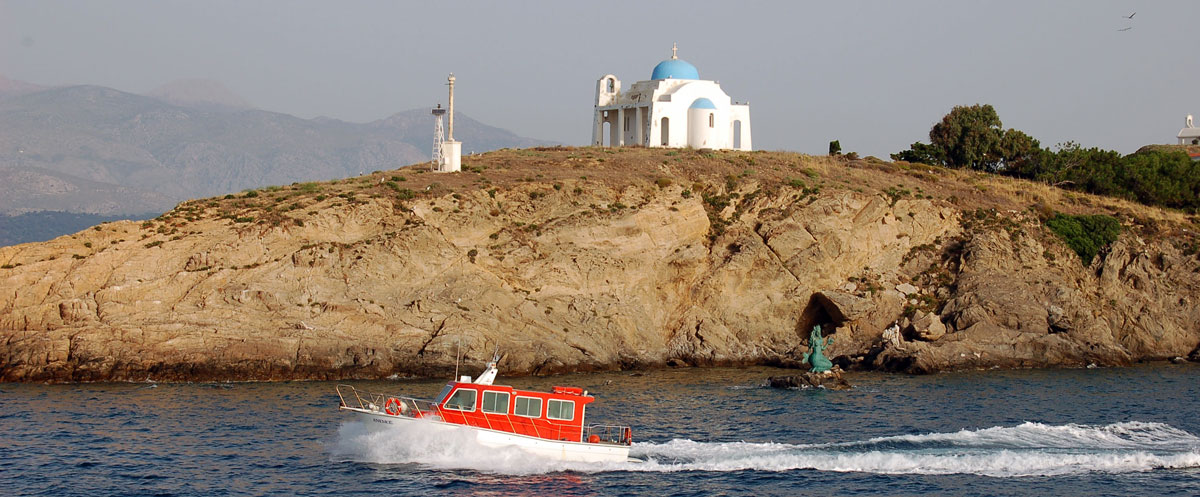
The ancient Greeks referred to the islands by the same name (the name of the islands reflects the land’s wealth in wine as the word “oíno” means in greek wine.) The historian Thoukydídis (5th century BC) wrote that the Athenian fleet used the islands as their base of operations against Chíos. In the area around the Castle, there are ancient remains from the Historic Age. On the whole, the fate of Oinoússes followed that of Chíos.
The islands were uninhabited during the 15th and 16th centuries, and used by pirates as a hideout. The Turks captured Oinoússes during the mid-16th century. During the beginning of the 18th century shepherds from Kardámyla (N. Chíos) permanently installed themselves on the islands and built the churches of Ágios Geórgios and later Ágios Nikólaos. Refugees from Pelopónnisos increased this small population at the end of the same century. The islands then began to develop their nautical skills in order to make a living, and became renowned in Greece and abroad.
The Hellenic Military Navy freed the islands from the Turks in November 1912, and Oinoússes was reunited with Greece. During both of the world wars, ships from Oinoússes were put to use as transporters for the Allies. They withstood great losses, particularly personnel. It is not a coincidence that the first ever Monument to the Missing Sailor in Greece was erected in Oinoússes to honour all those lost at sea.
Missing Sailor in Greece was erected in Oinoússes to honour all those lost at sea. In between the two world wars the Oinoússian shipowners established themselves in London. This continual excellence at sea also brought the building of the Merchant Navy School to Oinoússes, which today dominates over the life of the island.
Miscellaneous
Famous names arose in both the arts and commerce, especially those of large shipping companies (such as Lemós, Chatzipatéras, Fafaliós, Frángos and others).
Sightseeing
Apart from the Nautical Museum in the town, the Monastery of Evangelismós, with its hagiography of artist and poet F. Kóntoglos, lies a distance of 5km away. The Monastery dominates over the bay where it is thought that the Apostle Paul disembarked.





